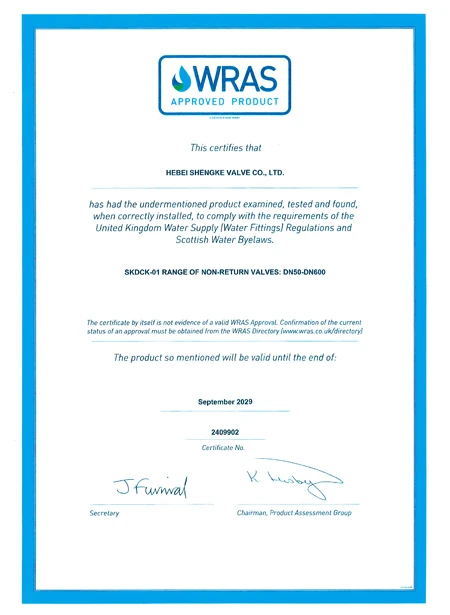Dec . 13, 2024 16:16 Back to list
cast iron foot valve
Understanding Cast Iron Foot Valves A Comprehensive Overview
Cast iron foot valves are crucial components in various fluid management systems, particularly in water supply and drainage applications. Their primary function is to prevent backflow and maintain the desired flow direction in pipelines, ensuring efficiency and effectiveness in fluid transport.
Construction and Materials
As the name suggests, foot valves are typically made from cast iron, a material known for its durability and resistance to corrosion. Cast iron offers excellent strength and can withstand high pressure, making it an ideal choice for applications that require robust components. The design of a foot valve generally includes a strainer at the inlet, which prevents debris and other large particles from entering the system, thereby prolonging the lifespan of the valve and connected components.
The internal mechanism usually consists of a spring-loaded or weight-loaded check mechanism that opens to allow flow when the pump is operational and closes immediately when the pump stops. This design minimizes the risk of backflow, which can cause significant operational issues and inefficiencies.
Applications
Foot valves are commonly used in various industries, including agricultural irrigation, municipal water systems, and industrial processes. In agricultural applications, these valves are essential for maintaining consistent suction in pumps that draw water from wells or ponds. They prevent the pump from losing prime, ensuring that the irrigation systems function smoothly without interruption.
In municipal water management, cast iron foot valves are often employed in lift stations and pumping stations. These valves help to regulate water flow and prevent contamination from backflow into the water supply. Their durability in harsh environmental conditions makes them suitable for outdoor installations, where they might be exposed to temperature fluctuations and other environmental stressors.
Advantages of Cast Iron Foot Valves
cast iron foot valve

1. Durability One of the main advantages of cast iron foot valves is their long lifespan. Cast iron can withstand harsh environmental conditions and does not easily corrode, which translates to lower maintenance costs and less frequent replacements.
2. Cost-Effectiveness While the initial cost of cast iron components might be higher than those made from plastic or other materials, the long-term benefits in terms of durability and reduced downtime make cast iron a cost-effective choice.
3. Ease of Maintenance Foot valves are relatively simple devices, and their straightforward design allows for easy maintenance. Many models can be serviced without the need for complete disassembly, meaning that routine checks and repairs can be completed more efficiently.
4. High Resistance to Wear Cast iron is particularly resistant to wear and tear, which is essential when the foot valve is exposed to various debris and sediment in water sources.
Challenges and Considerations
Despite their many advantages, cast iron foot valves also come with some challenges. The weight of cast iron can make installation more cumbersome compared to lighter materials, and their rigid structure may be less forgiving in applications that require considerable flexing. Additionally, while cast iron is resistant to corrosion, it is still susceptible to rust if not properly maintained, especially in saltwater applications.
Conclusion
In conclusion, cast iron foot valves play an indispensable role in ensuring effective fluid management across many applications. Their durability, cost-effectiveness, and ease of maintenance make them a preferred choice for many industries. Understanding their function, advantages, and limitations is essential for effectively incorporating them into any fluid management system. As technology advances, it is likely that methods of improving the design and functionality of cast iron foot valves will continue to evolve, further enhancing their performance and reliability in various applications.
Share